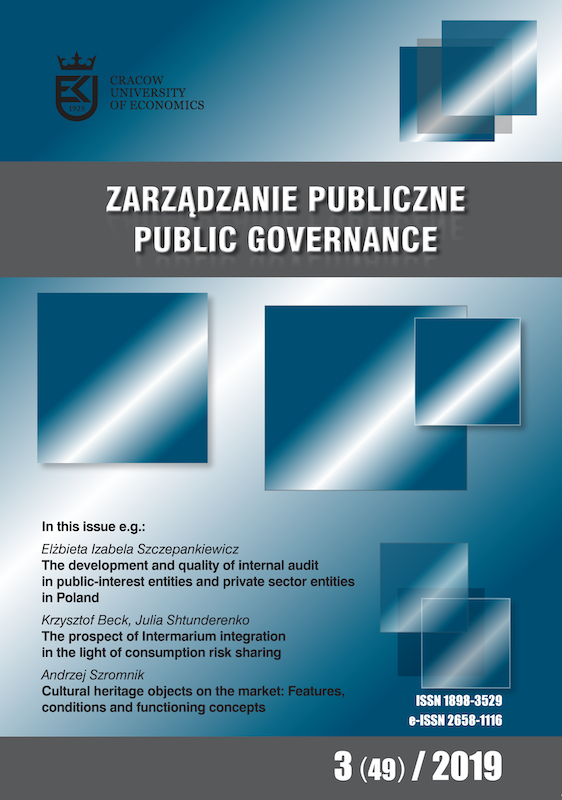Cultural heritage objects on the market: Features, conditions and functioning Concepts
Cultural heritage objects on the market: Features, conditions and functioning Concepts
Author(s): Andrzej SzromnikSubject(s): Politics / Political Sciences, Economy, Fine Arts / Performing Arts, Architecture, Governance
Published by: Uniwersytet Ekonomiczny w Krakowie we współpracy z Wydawnictwem Naukowym Scholar
Keywords: cultural heritage; market of cultural products and services; historical objects; historical buildings; economics of culture; marketing of culture; cultural tourism; non-profit marketing
Summary/Abstract: Objectives: The purpose of this paper is to present the conditions and possibilities of market reorientation of culturalheritage objects with respect to all the features of such objects including, inter alia, the historical, artistic and emotionalvalues, forms of ownership, functions and previous market position. The author presents the main determinants andforms of “opening” the historical objects (antique properties) for existing and new markets through developing andwidening the offering of services.Research Design & Methods: This paper introduces a concept and a model that rely on the author’s original visionof diagnosing, shaping and implementing market restructuring for cultural heritage objects. From the methodologicalpoint of view the theoretical concepts of illustrating the gradual expansion of market relations between historicalobjects and their stakeholders rely on theoretical concepts of market, market economy, entrepreneurship and marketingmanagement of NGO’s.Findings: In market economy all organizations are included, at least to some extent, in a network of relationships anddependencies specific for the market and for the processes of exchanging values between partners. This also appliesto the cultural sector and, within it, to various cultural heritage objects. The gradual reduction of financing of theseobjects by the State or regional budgets force the management of cultural objects to accept and apply a new functionalphilosophy – a philosophy of gradual expansion of its own market and increasing of additional financial revenuesgenerated on this market.Implications / Recommendations: The author does not question the supreme, social and civilizing role of manyhistoric buildings, but he also claims that orientation for additional market resources should be treated and perceivedas recommended and even necessary.Contribution / Value Added: In the paper the process of market reorientation of cultural heritage objects has been introducedas a continuum – as a cycle of systematic changes, starting initially from traditional orientation for preservation andconservation and ending on the appropriate and final orientation for the market.
Journal: Zarządzanie Publiczne
- Issue Year: 2019
- Issue No: 49
- Page Range: 35-52
- Page Count: 18
- Language: English

